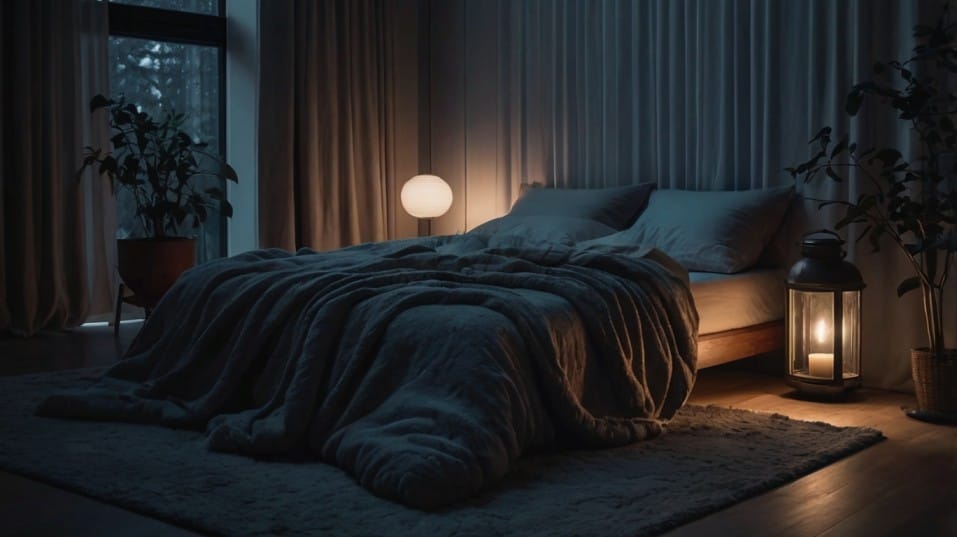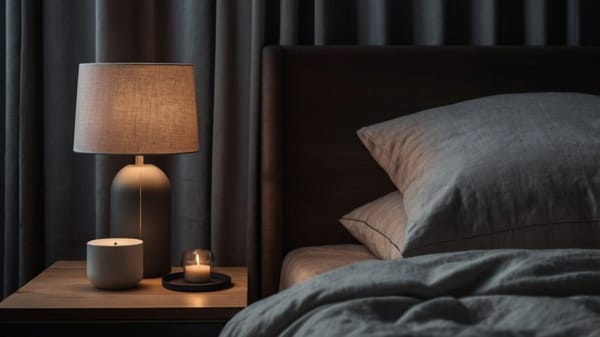How Chronic Pain Affects Your Sleep Patterns
Chronic pain hijacks your sleep cycles. Learn how to reset your system with science-backed tools that bring real rest, energy, and recovery.

What if your sleep struggles aren't just about habits—but hidden pain your body hasn’t stopped bracing for?
You don’t need to be in agony for pain to wreck your rest. Even low-grade, background discomfort can hijack your sleep cycles, keeping your system wired when it should be shutting down.
But the moment you understand how pain messes with sleep, you can start using simple, science-backed tools to quiet your nervous system and finally get the deep rest you’ve been missing.
Pain Doesn’t Sleep When You Do
Here’s the reality: pain isn’t just a daytime issue. At night, when your environment quiets down, pain signals often get louder.
Your brain no longer has distractions to tune them out. And even when you think you're asleep, your nervous system stays on high alert, scanning for discomfort, bracing against movement, guarding sore areas.
That low hum of vigilance is exhausting. Pain activates the sympathetic nervous system—your fight-or-flight mode. That ramps up cortisol, tightens your muscles, and keeps your brain cycling through lighter stages of sleep.
Deep sleep and REM sleep—the stuff that fuels energy, mood, memory, and tissue repair—get shoved to the sidelines.
What you’re left with is technically sleep, but not the kind that refuels you. You’re going to bed tired and waking up tired because your system never really shut down.

How Pain Rewires Your Sleep Cycles
Pain doesn't just interfere with your comfort—it physically rewires how your sleep cycles operate.
Healthy sleep runs in roughly 90-minute cycles: light sleep (Stage 1 and 2), deep sleep (Stage 3), and REM. You cycle through these several times per night.
Each stage plays a unique role—deep sleep helps muscle repair and immune recovery; REM handles emotional processing and memory consolidation.
With chronic pain, this rhythm breaks down. Pain shortens your deep sleep stages and fragments your REM.
It also leads to micro-arousals—brief moments of waking that you don’t remember, but that disrupt sleep architecture. The result is more time in light sleep and less in the stages that actually matter.
Even worse, poor sleep increases your pain sensitivity the next day. That’s not a theory—that’s well-documented neuroscience.
Sleep loss reduces your brain’s ability to regulate pain through its internal “painkillers” like serotonin and dopamine.
So, the worse you sleep, the more pain you feel. And the more pain you feel, the worse you sleep. It’s a vicious, physiological loop.
What Actually Helps—According to Science, Not Trends
Let’s be clear: you don’t need hacks or a 12-step bedtime checklist. You need calm, consistency, and a smarter environment. Start by working with your biology—not against it.
Get Your Body Out of Fight-or-Flight
Chronic pain keeps your nervous system in a defensive state. Your job is to help flip the switch into rest-and-digest mode, where true sleep happens. That means reducing tension before bed, both physical and mental.
Use progressive muscle relaxation: tense a muscle group (like your calves), hold for 5 seconds, then release. Work your way up the body. This lowers cortisol and slows your heart rate.
Breathwork is another cheat code. Try this: inhale for 4 seconds, hold for 4, exhale for 6. Do this for 2–5 minutes while lying in bed.
Research shows that paced breathing activates the vagus nerve, helping shift your system toward deep relaxation.
Rethink Your Sleep Setup
If your bed causes pressure, your body won’t let you fully sink into sleep. Chronic pain demands a supportive surface that doesn’t trigger guarding or muscle bracing.
This doesn’t mean buying a $3,000 mattress. But it does mean being smart:
- Use a pillow between your knees if you sleep on your side. It aligns your hips and relieves lower back strain.
- If you're a back sleeper, a pillow under your knees can reduce tension in the lumbar spine.
- Keep your room cool—ideally between 60–67°F. Heat increases inflammation and worsens joint pain.
- Use blackout curtains and remove ambient light. Light pollution reduces melatonin production and fragments sleep.
Comfort isn't a luxury—it’s the foundation.
Move, But Don’t Overdo It
Pain can make you avoid movement, but inactivity stiffens joints and worsens pain over time. Gentle, consistent movement during the day reduces inflammation and signals safety to the nervous system.
In the evening, lean into low-intensity mobility work: foam rolling, dynamic stretching, or a short walk.
Avoid workouts within 2–3 hours of bed—intense activity spikes cortisol and body temp, both sleep disruptors. Think movement as medicine, not punishment.
Dial In a Consistent Wind-Down Routine
The hour before bed should feel predictable. Your brain craves cues that sleep is coming. That could be as simple as:
- Dim the lights.
- Take a warm shower (raises body temp briefly, then cools it to promote drowsiness).
- Journal or read—not scroll.
- Use a heating pad on pain zones to calm neural activity.
This doesn’t need to be elaborate. It needs to be repeatable.
Final Thoughts
Chronic pain doesn’t have to control your nights. By understanding how it disrupts sleep—and how to interrupt that cycle—you take back control.
Every tweak to your routine, every breath you slow down, every change to your sleep setup brings your body one step closer to real rest.
Don’t wait for perfect conditions. You don’t need a pain-free night to start sleeping better. Start with one upgrade tonight. Train your system to expect rest, not resistance.
You’ve got the tools. Now use them. Your energy, clarity, and recovery are on the other side of better sleep. Start now. Tonight.




